Visits and tours
The Péronne museum provides an overview of local history as well as an in-depth panorama of the Great War, presented both chronologically and thematically.
The Château:
The Guard Room
Step into the courtyard of the medieval castle and discover these permanent exhibition spaces dedicated to our local history, an ideal prelude to your visit:
The Château de Péronne, sentinel of the Somme: Standing watch over a strategically-important route, the castle, and the town of Péronne itself, have had a tumultuous life. Discover some of the key moments in this long history.
Péronne, a border stronghold: Nestled in a meander of the River Somme, Péronne is a frontier town. In this room, a 180° projection covers several centuries in the history of this much-disputed town, frequently besieged and caught up in conflict.
A territory caught up in the maelstrom of war Fissured from North to South by the front line, the eastern part of the Somme was one of the major theatres of conflict. These images provide some insight into the scale of the destruction.
Australian troops and the Battle of Mont Saint-Quentin: The hill known as Mont Saint-Quentin towers over Péronne. It serves as an ideal observation point, and this strategically-important position was defended doggedly by the Germans in the summer of 1918. This dedicated space explores the context and highlights of a battle in which the Australians acquitted themselves so remarkably in the late summer of 1918.. An animated relief map retraces the progress of the operation.
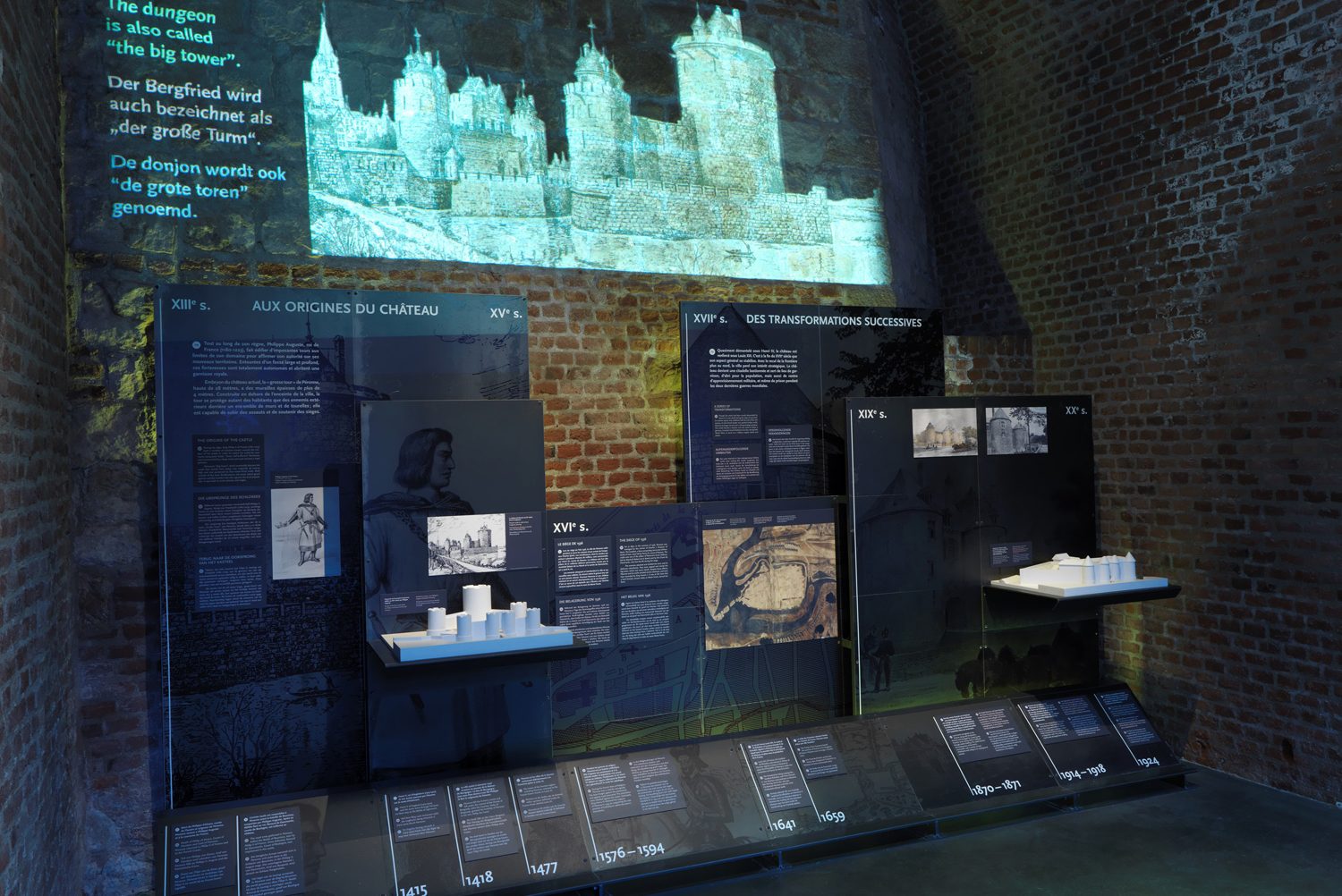
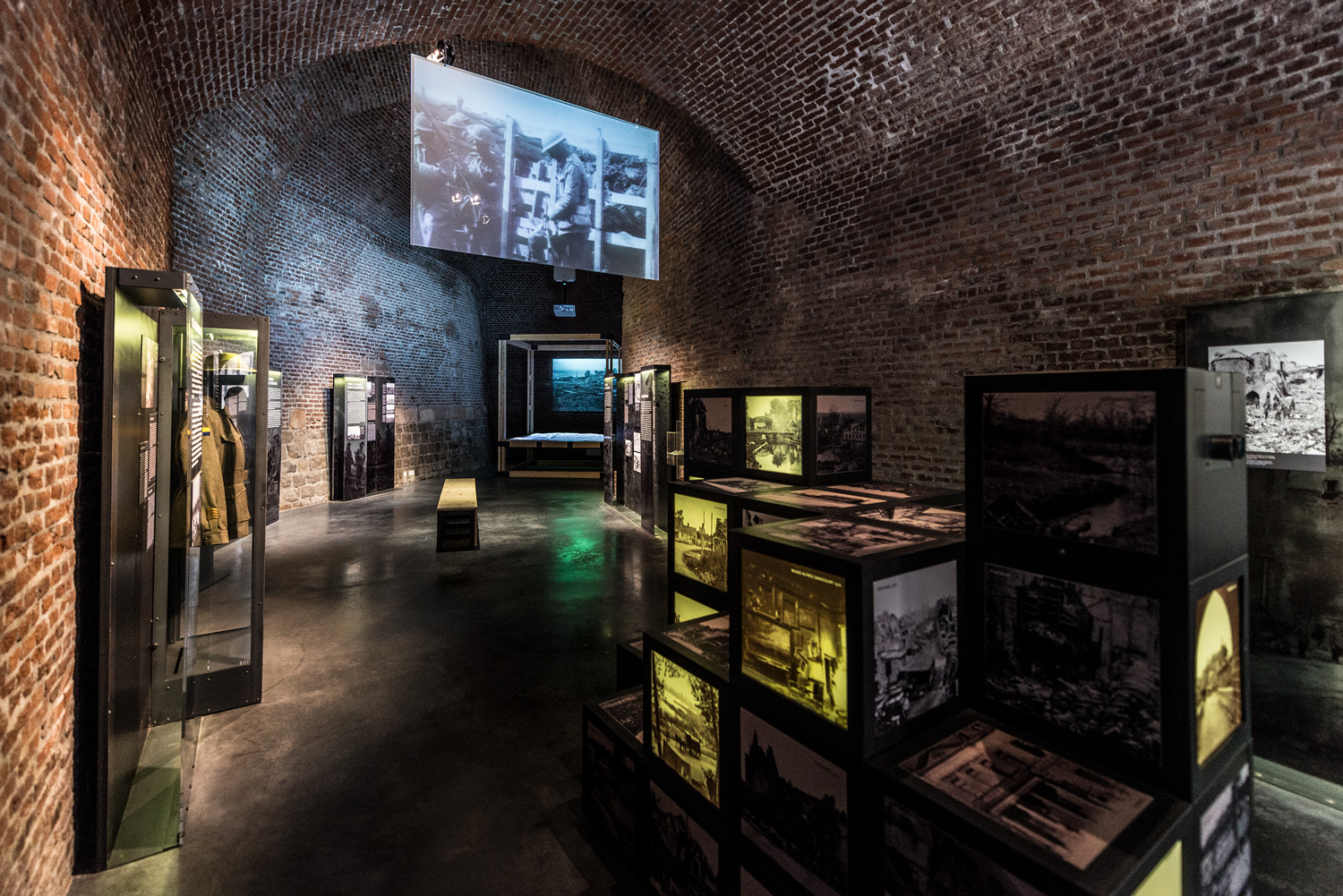
The Mont Saint-Quentin Memorial Route
Continue your visit by exploring the Mont Saint-Quentin Memorial Route (a 1 mile-long route starting at the Historial and taking in six stops (including the Australian Memorial) related to the battle)
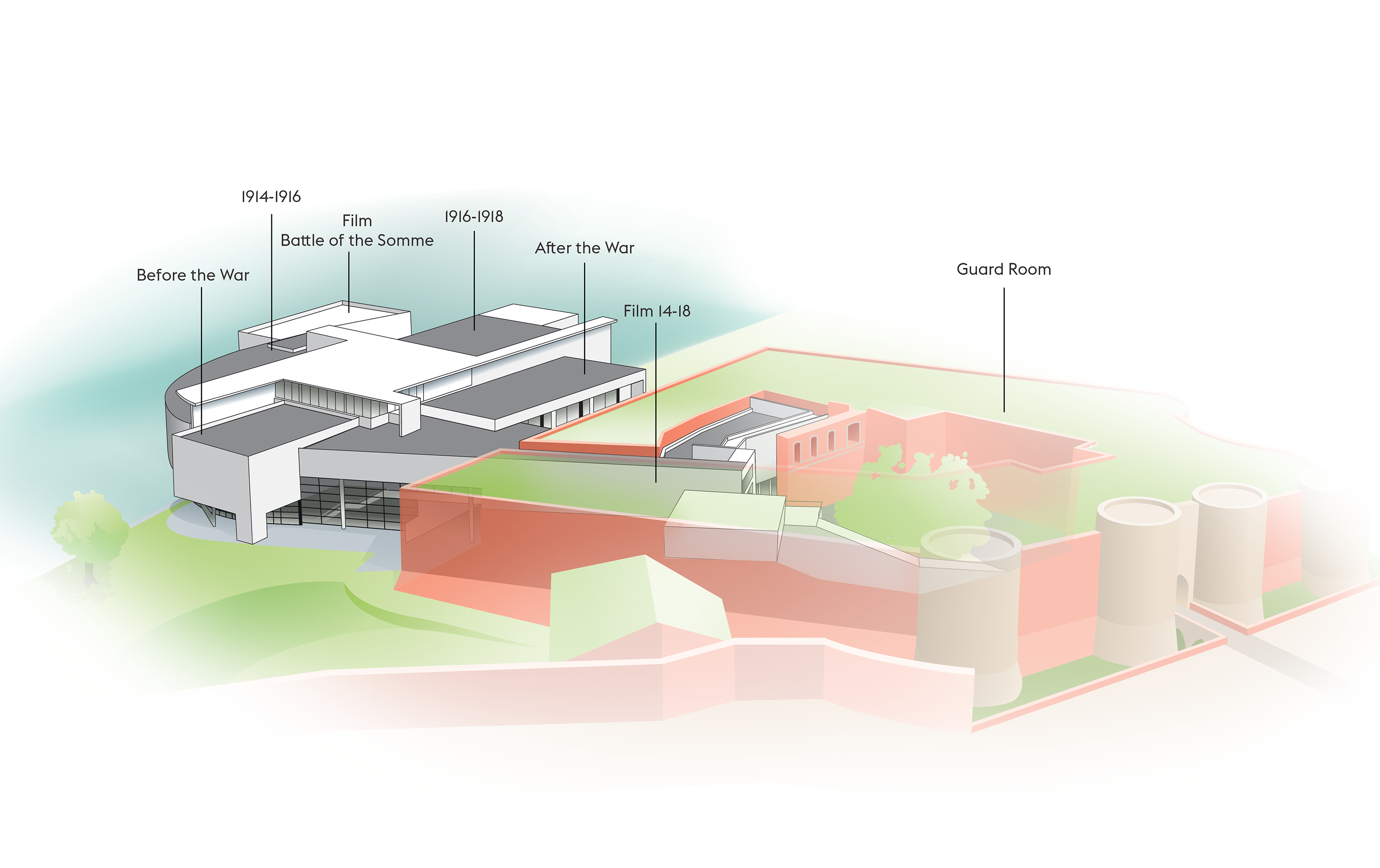
The Museum:
Discover the Great War
Adopting a cultural and societal approach to the war means putting the focus firmly on the people – both soldiers and civilians – who found themselves at the heart of the conflict.
The museum is designed to create a sense of proximity and shared emotion: the reclining representations of French, German and British soldiers set into the floor itself – complete with full military gear as well as their personal effects – never fail to surprise visitors. The central part of each room is dedicated to strategic and military considerations, while the display cases all around the walls explore the impact of the war on civilians and society as a whole.
The permanent exhibitions and special shows draw upon a unique collections of 75,000 original artefacts and documents. The items on display at the Historial provide invaluable historical testimony, as well as fascinating insights into peoples and societies at war. Military equipment, objects crafted in the trenches, industrial goods, everyday items, newspapers, posters, caricatures, letters, postcards, decorative plates, games and toys, ration cards, works of art, photographs, films… All of these individual and collective records of the Great War cast light upon the day-to-day life of soldiers and civilians, and their perspectives on the conflict.
The war inspired countless artworks, offering diverse perspectives in a broad variety of media. “Artist-warriors” left behind descriptions of military offensives, supply operations, time on leave, wounds and injuries (Fernand Léger, André Devambez), day-to-day life on the Western Front (Mathurin Méheut, Lucien Jonas), life away from the front line, and of course the experience of grief.
The war inspired countless artworks, offering diverse perspectives in a broad variety of media. “Artist-warriors” left behind descriptions of military offensives, supply operations, time on leave, wounds and injuries
(Fernand Léger, André Devambez), day-to-day life on the Western Front (Mathurin Méheut, Lucien Jonas), life away from the front line, and of course the experience of grief. Otto Dix‘s Der Krieg series, of which the Historial holds the only full copy in a French public institution, vividly evokes the horror and trauma of war.
Other graphic works are dotted throughout the exhibition spaces, on black panels and in the display drawers.
The exhibition comprises 5 display spaces and 2 audiovisual rooms.
Film 14-18, an introduction
This short film covers the broad outlines of the First World War, with a combination of archive images and illustrated maps. This reminder of the historical context serves to refresh visitors’ memories of the key dates and events of the conflict.
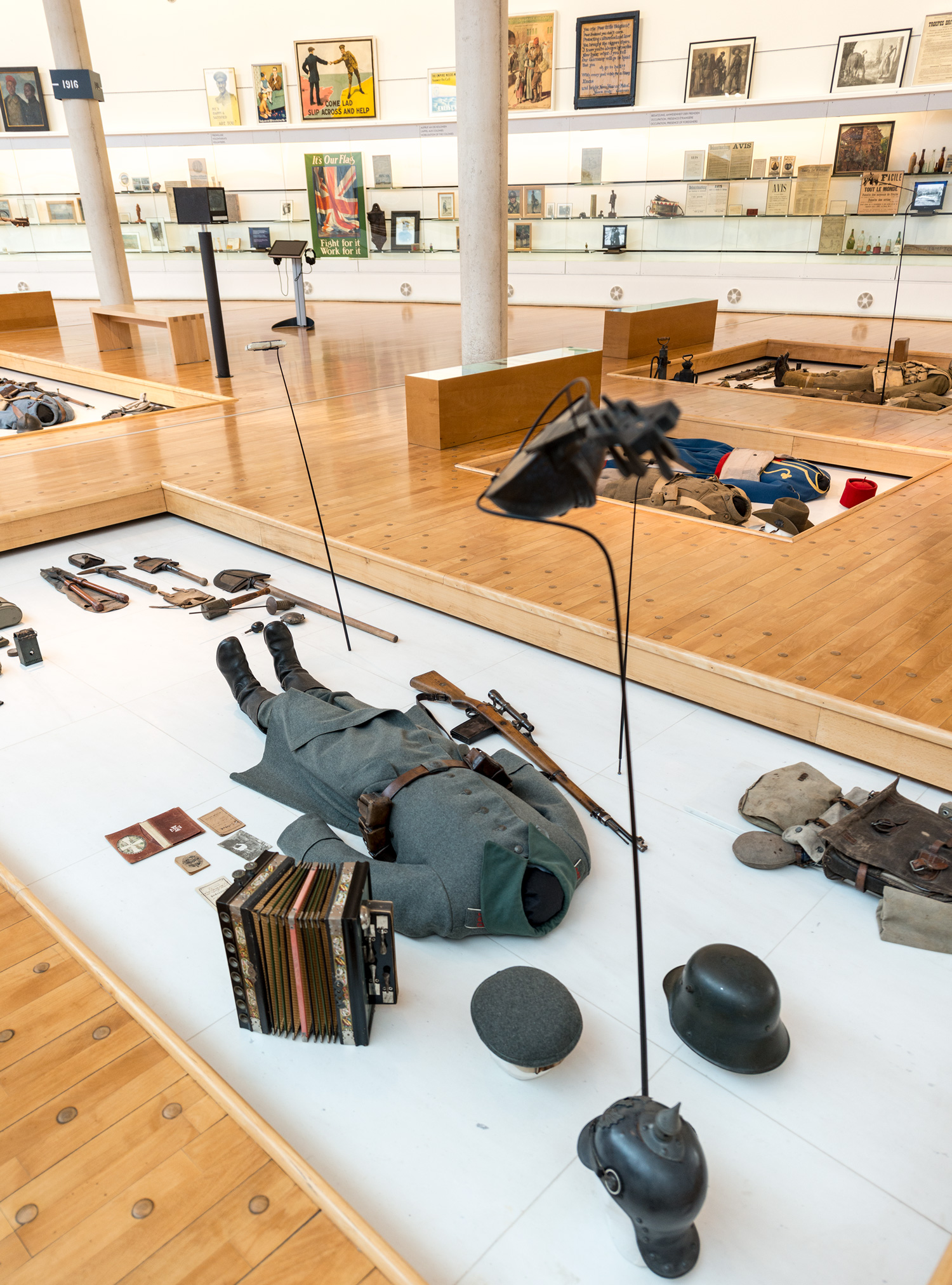
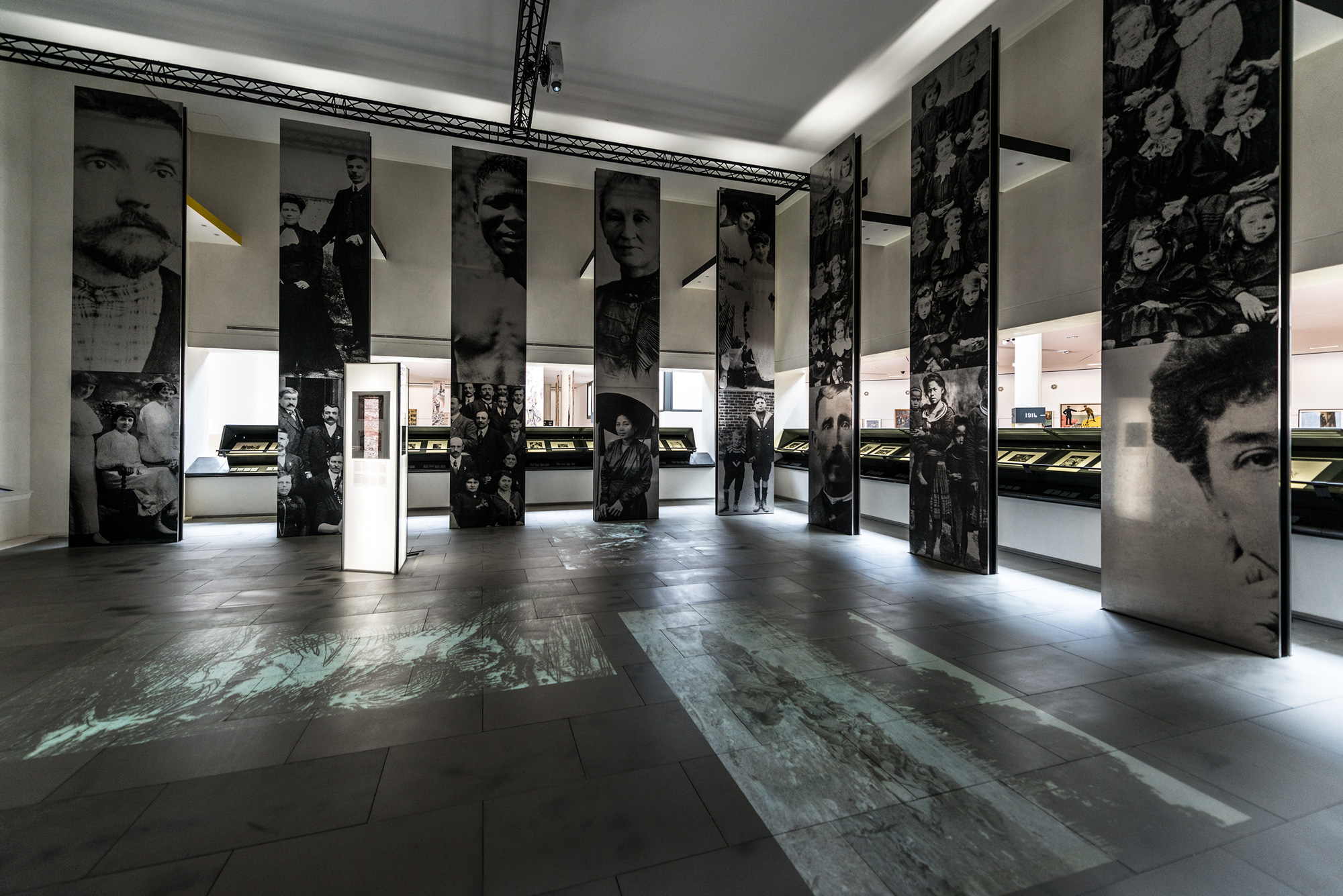
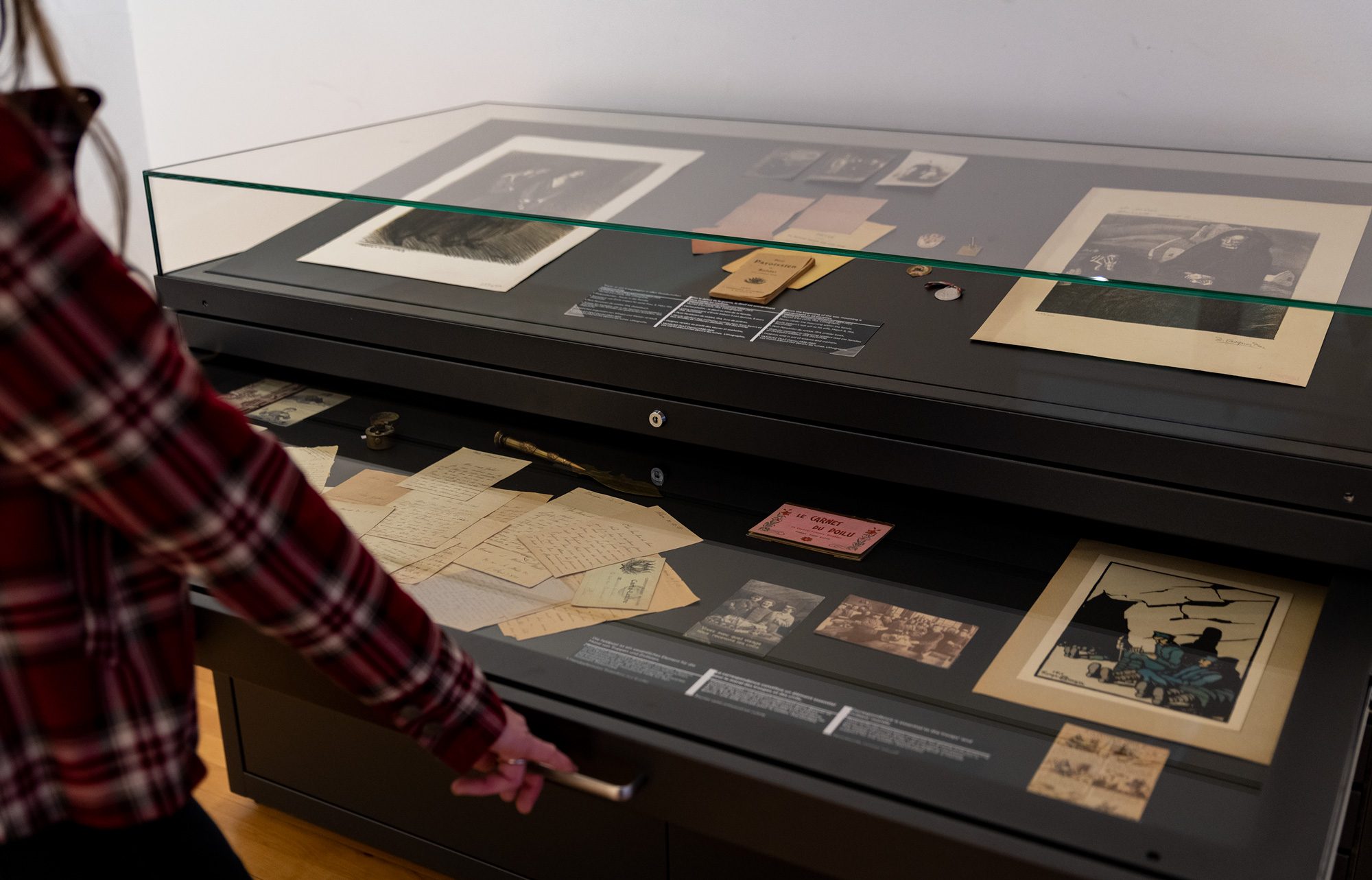
The “Before the War” room explores the causes of the war: imperial ambitions and tensions, colonial violence, the arms race, conflict in the Balkans, the web of alliances, the militarisation of European societies etc.
The “1914-1916: Experiences of War” room zooms in on the experiences of mobilisation, the monotony of trench warfare, the occupation of French and Belgian territory, death in combat, grief…
The audiovisual room features a film on the subject of the Battle of the Somme of 1916. Directed by Laurent Veray, this 30-minute long film is an innovative, immersive experience projected onto 3 screens simultaneously, retracing the five months of bloody combat which claimed almost 1.2 million victims between July and November 1916.
The “1916 – 1918: total, industrial war” room illustrates the realities of this new kind of war, including the mobilisation of resources and people, as well as the propaganda which sought to communicate the essential importance of the war effort.
The Otto Dix room contains 51 engravings from the Der Krieg series, of which the Historial possesses one of the few original box sets to survive intact. These images evoke the trauma of war, the devastation of people’s homes and the landscape itself, and the suffering of soldiers and civilians.
The “After the War: consequences of the conflict” room looks at the state of the world in the 1920s: counting the losses, reconstruction, hopes for peace, tensions and crises, new ideologies and major disruptions to the old world order.
In order to ensure the best possible visitor experience, the bookshop-boutique (and the museum café when it reopens) are open to all during the museum’s opening hours.

